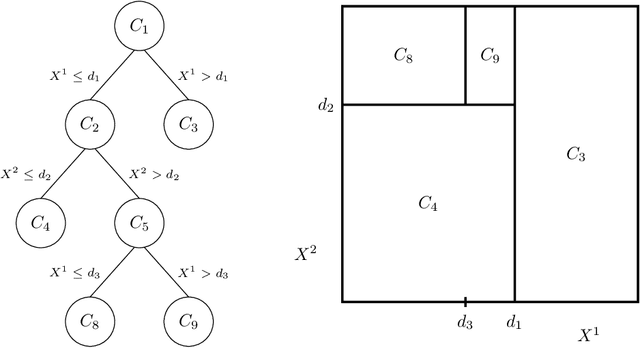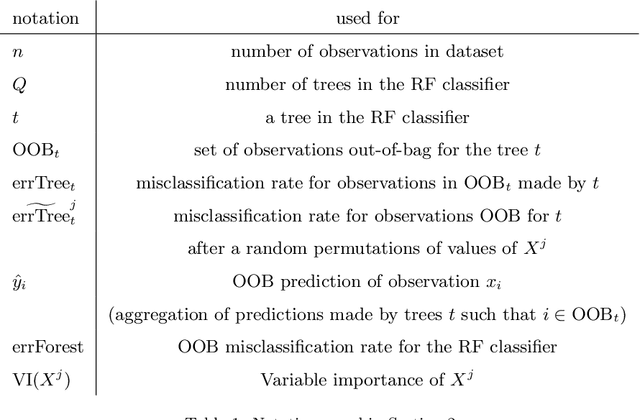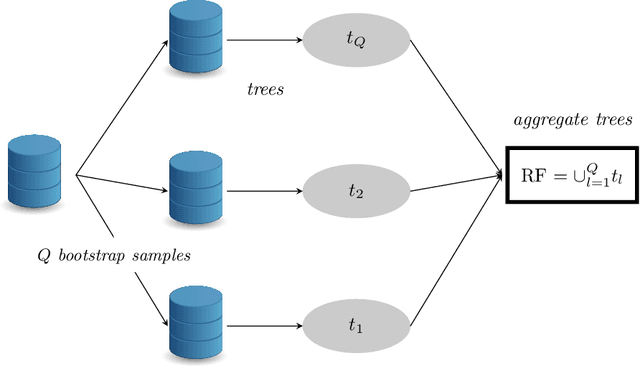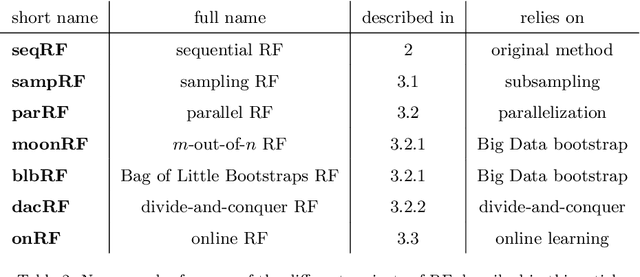Jean-Michel Poggi
UPD5, LM-Orsay
Conformal Prediction for Hierarchical Data
Nov 20, 2024Abstract:Reconciliation has become an essential tool in multivariate point forecasting for hierarchical time series. However, there is still a lack of understanding of the theoretical properties of probabilistic Forecast Reconciliation techniques. Meanwhile, Conformal Prediction is a general framework with growing appeal that provides prediction sets with probabilistic guarantees in finite sample. In this paper, we propose a first step towards combining Conformal Prediction and Forecast Reconciliation by analyzing how including a reconciliation step in the Split Conformal Prediction (SCP) procedure enhances the resulting prediction sets. In particular, we show that the validity granted by SCP remains while improving the efficiency of the prediction sets. We also advocate a variation of the theoretical procedure for practical use. Finally, we illustrate these results with simulations.
Random Forests for Big Data
Mar 22, 2017



Abstract:Big Data is one of the major challenges of statistical science and has numerous consequences from algorithmic and theoretical viewpoints. Big Data always involve massive data but they also often include online data and data heterogeneity. Recently some statistical methods have been adapted to process Big Data, like linear regression models, clustering methods and bootstrapping schemes. Based on decision trees combined with aggregation and bootstrap ideas, random forests were introduced by Breiman in 2001. They are a powerful nonparametric statistical method allowing to consider in a single and versatile framework regression problems, as well as two-class and multi-class classification problems. Focusing on classification problems, this paper proposes a selective review of available proposals that deal with scaling random forests to Big Data problems. These proposals rely on parallel environments or on online adaptations of random forests. We also describe how related quantities -- such as out-of-bag error and variable importance -- are addressed in these methods. Then, we formulate various remarks for random forests in the Big Data context. Finally, we experiment five variants on two massive datasets (15 and 120 millions of observations), a simulated one as well as real world data. One variant relies on subsampling while three others are related to parallel implementations of random forests and involve either various adaptations of bootstrap to Big Data or to "divide-and-conquer" approaches. The fifth variant relates on online learning of random forests. These numerical experiments lead to highlight the relative performance of the different variants, as well as some of their limitations.
Random Forests: some methodological insights
Nov 21, 2008
Abstract:This paper examines from an experimental perspective random forests, the increasingly used statistical method for classification and regression problems introduced by Leo Breiman in 2001. It first aims at confirming, known but sparse, advice for using random forests and at proposing some complementary remarks for both standard problems as well as high dimensional ones for which the number of variables hugely exceeds the sample size. But the main contribution of this paper is twofold: to provide some insights about the behavior of the variable importance index based on random forests and in addition, to propose to investigate two classical issues of variable selection. The first one is to find important variables for interpretation and the second one is more restrictive and try to design a good prediction model. The strategy involves a ranking of explanatory variables using the random forests score of importance and a stepwise ascending variable introduction strategy.
 Add to Chrome
Add to Chrome Add to Firefox
Add to Firefox Add to Edge
Add to Edge